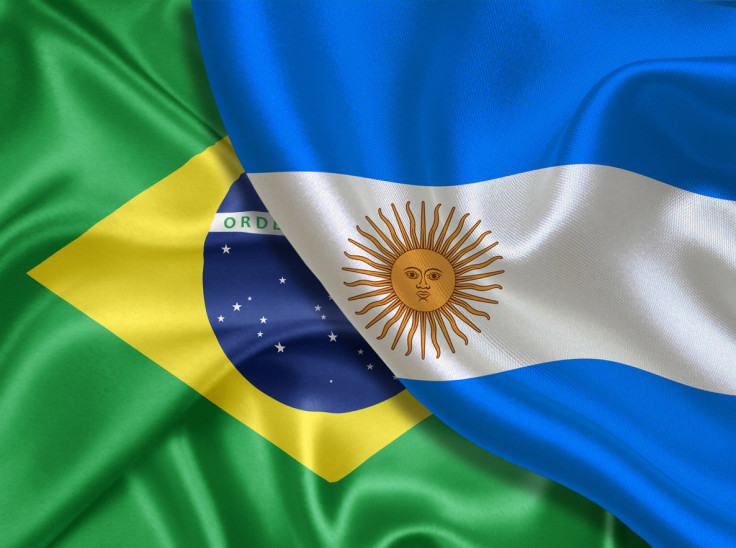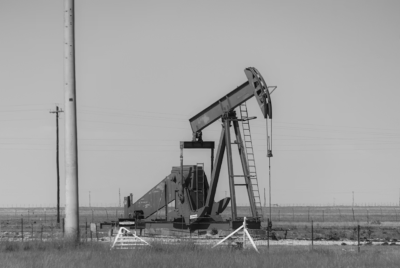Spectacular market gains in the Americas dwarf FTSE 100's impressive 2016 spike
UK stock market outperformed its Western European peers in 2016, but emerging markets stacked higher gains.

Over the last three months, much of the equity market's discourse has been about the stunning performance of the FTSE 100, the UK's blue chip index that rose by 13% on an annualised basis in 2016. After Britons voted in favour of leaving the European Union on 23 June, the weaker pound left in its wake made UK-listed equities appealing to foreign investors and funds.
The FTSE 100 has bounced back above 7,000 points to a record high, with investors piling in to buy sterling-valued stocks of some of the world's most globally-focused companies, who more often than not file their earnings in the ever-strengthening US dollar.
In fact, investor appetite ensured the FTSE 100's rise was more than twice that of Germany's DAX, which rose 6%, and more than four times that of France's CAC 40, which rose 3%, over the corresponding period.
Going in the other direction, Italy's stock market saw a decline of more than 10% as systemic woes continue to plague its banking system, while macroeconomic malaise and political uncertainty weighted on Spain's IBEX, shedding nearly 4%.
It is clear the UK blue chip index has been the top dog for 2016 among its major Western European rivals. However, its impressive performance pales in comparison to gains made by indices in the Americas.
Viva Latin America
Argentine equities might not have caught your eye, but the booting out of Cristina Fernández de Kirchner from the presidential office and the election of market-friendly Mauricio Macri in 2015 saw the Buenos Aires stock exchange begin an uptick that acquired a firmer footing in 2016.
Indeed, investors flocked back, rewarding Macri's reform agenda and Argentina's return to the bond markets after years in wildness, with the MERVAL index up a massive 41% on an annualised basis. In Peru, Pedro Pablo Kuczynski, an investment banker and former private equity boss, beat Keiko Fujimori, daughter of the now-jailed former president Alberto Fujimori; the market went on a similar recovery run with the Bolsa de Valores de Lima trading 58% higher compared to 12 months ago.

Meanwhile, in neighbouring Brazil, effects of a recovery from the damaging Petrobras scandal became visible as the country's economy began to limp back to health following the impeachment of President Dilma Rouseff. Brazil, a prominent oil producer, did not sign up a crude production cut for 2017, engineered by Opec and selected non-Opec countries. Add up the sum of small parts and bigger picture has the Sao Paulo BOVESPA up 38% over 12 months; impressive if not quite as spectacular as the gains noted at the rival Buenos Aires stock exchange.
However, Mexico – a market keenly observed by many overseas investors as the harbinger of sentiment across Latin America – ended up disappointing in 2016, thanks in no small part to Donald Trump's 'build a wall' rhetoric, his nomination to the Republican party's ticket and his eventual victory in the US presidential election.
A combination of lower oil prices and Trump's verbal assault dragged the Bolsa Mexicana de Valores – considered the second largest stock exchange in Latin America behind Sao Paulo's BOVESPA – down to a modest 5% annualised gain.
Trump's thumping effect
If Trump weighed down Mexican equities, his win at the US presidential poll sent North American markets on a bull run with promises of a low-tax economy, infrastructure spending and the nomination of a plethora of business people to his cabinet, including ExxonMobil chief executive Rex Tillerson, who was named as his pick for secretary of state.
With bond yields and the dollar up, the Dow Jones Industrial Average remains tantalisingly close to 20,000 points, up an impressive 12% year-over-year. Concurrently S&P 500 and NASDAQ notched gains of over 8% and 6.5% respectively, while Canada's TSX rose nearly 16% over the same period.
That Chinese slowdown
It wasn't quite as plain sailing for Asian equity markets, with China's economy experiencing a transition from manufacturing to a more service sector-oriented one. While predictions of a severe 2016 Chinese slowdown were way off the mark, growing domestic realignment, debt levels and lack of market framework maturity saw the Shanghai Composite lower by over 12% year-on-year.
Rival India's BSE SENSEX came in 1.10% higher over the corresponding period, with along with hopes of a much improved performance in 2017, with Prime Minister Narendra Modi's economic reform agenda in full flight.
Elsewhere, Hong Kong's Hang Seng and Singapore's Straits Times Index end the year broadly flat, while electronics giant Samsung's misfortunes with exploding mobile handsets tempered gains on South Korea's KOSPI to a modest 3.06%, compared to other emerging markets.
Finally, technology and industrial behemoth Toshiba's end-of-the-year writedown at its nuclear outfit, and the resignation of advertising firm Dentsu's boss in the wake of an overworked employee's suicide, created an unnecessary end-of-year market kerfuffle in Japan. With a stronger yen already weighing on investors' minds, the Nikkei 225 stayed broadly flat, up a mere 0.86% year-ib-year, hardly troubling the record books the way the FTSE 100 and a few emerging markets did.
© Copyright IBTimes 2025. All rights reserved.


















